NASA is sending humans back into deep space as part of the Artemis program. The mission? Establish a first long-term presence on the Moon’s South Pole and prepare for future missions to Mars. Audacious and exciting. We couldn’t agree more.
Webex has joined the Artemis I mission as part of Callisto, a technology-demonstration payload that was built in collaboration with Lockheed Martin and Amazon engineers and is flying onboard NASA’s Orion spacecraft for this mission. The Artemis generation will see the first humans living and working on the Moon. A dawn of a new lunar economy creating jobs not imagined yet, in places unknown, through realizing ideas that seem unfathomable. We are excited about the possibilities this era brings and believe through the magic that sits at the intersection of technology, tenacity, and human collaboration, we can—together—propel humanity faster and further than ever before. We are proud to be working alongside extraordinary minds in pushing the boundaries of deep space video collaboration. Welcome aboard the Callisto Technology Demonstration, as Artemis I ushers in the new era of deep space exploration.
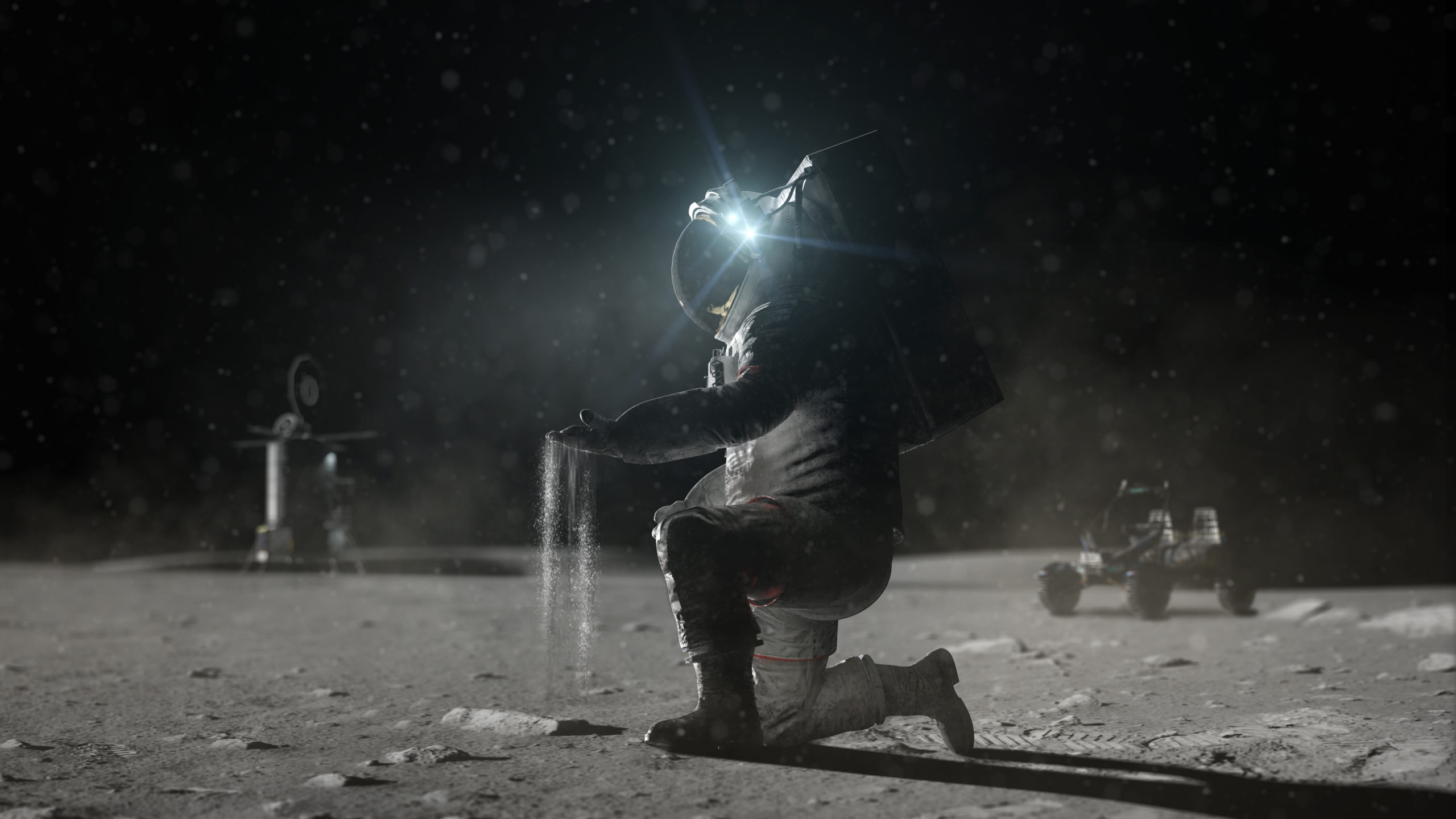
Orion on-screen: deep space video collaboration
Star Trek. The Expanse. Interstellar. The magic of television shows and movies makes communicating with space look easy. On the big (and little) screen, astronauts can chat with their earth-bound loved ones with crystal-clear video and audio—without delays. For the most part, this holds for our fictional friends no matter where they are in space.
The reality? Most of this is still science fiction.
As you can imagine, actual communication in deep space is a challenging endeavor. We are engaging in visual collaboration with a spacecraft that will be more than 240,000 miles away. That’s 1,000 times farther than the International Space Station. Between latency, interference, and bandwidth considerations, the struggle to connect people is real. When the connection is established, the anticipated video communication experience is also different. The last time we saw video from the Moon, it was black and white, grainy, and not anywhere close to real-time. Technology has come a long way since, and so have the expectations.
For the longest, long-distance relationship
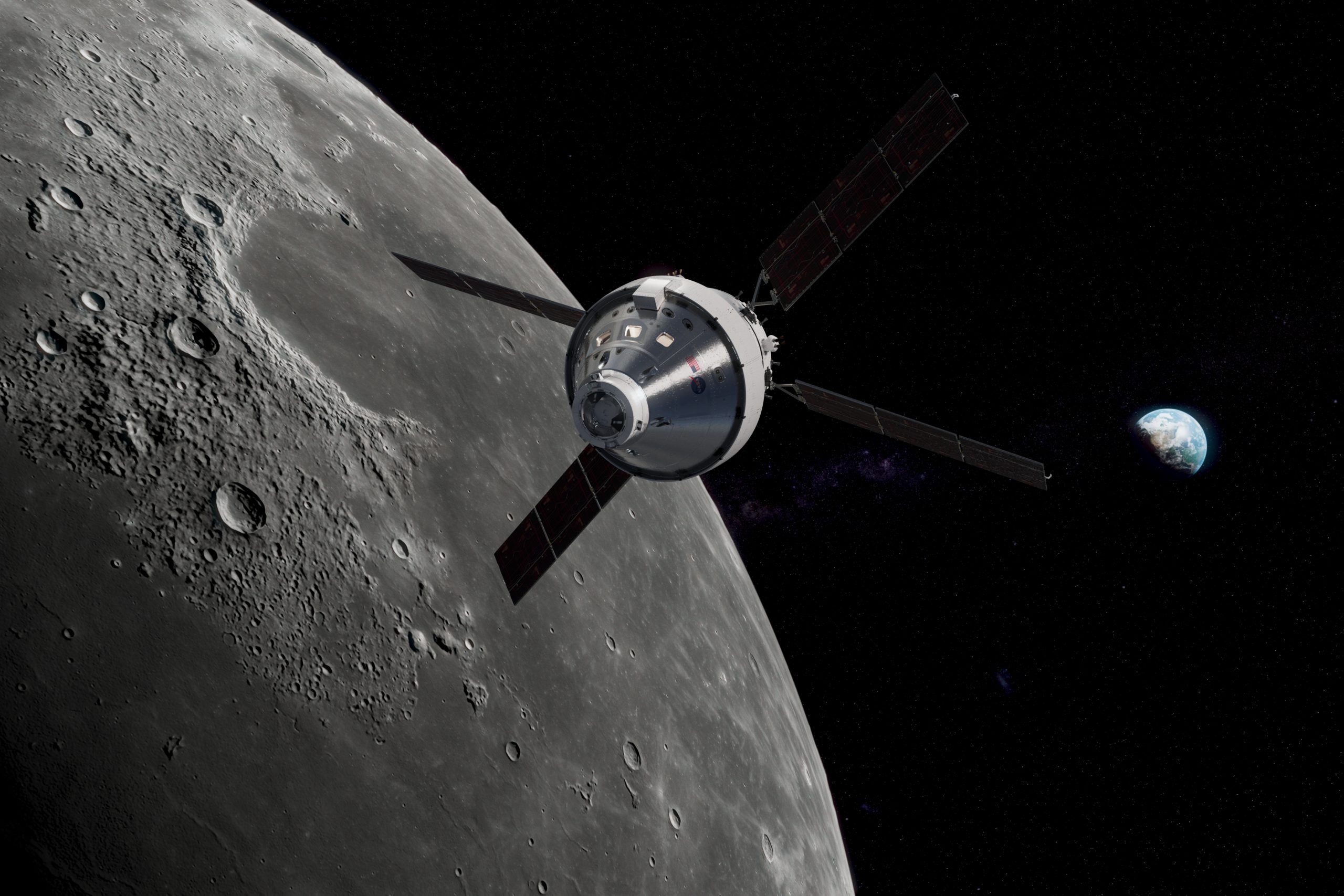
Artemis I is the first integrated test of NASA’s deep space exploration systems, including the all-new Space Launch System (SLS) rocket and the Orion spacecraft. Although the first mission is uncrewed, it is a critical step allowing NASA to test technologies used for future Artemis missions in human deep space exploration. Through Callisto, Webex joins other innovative technologies designed to keep astronauts connected and emotionally healthy.
Joining Lockheed Martin, our engineers have helped develop a state-of-the-art, custom-built version of Webex for testing deep space video collaboration. This is not the same solution that enables you to work from anywhere on Earth. It is a first-of-its-kind solution designed to interface with NASA’s Deep Space Network; bring modern and immersive collaboration capabilities to cosmic conversations; and even more, provide a realistic video experience while navigating the extremes of distance, atmosphere, and space noise.
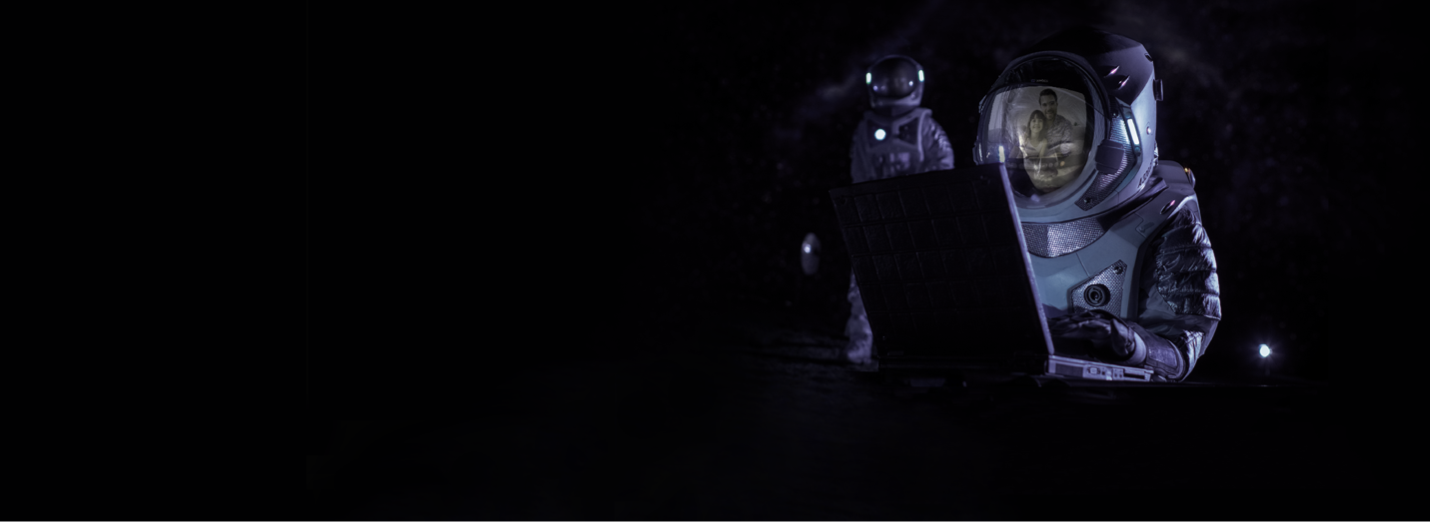
As humans prepare for journeys that demand longer and further exploration, this first test will provide invaluable intelligence on next-generation deep space video collaboration.
Purpose-built for deep space
Deep space video collaboration is a tricky science. It necessitates a thorough understanding of video communication technology and expertise across a complex ecosystem of separate yet interconnected systems, including networking, security, and encryption. As a company, our deep expertise in navigating these backend challenges helps us uniquely address real-world challenges for off-world video conversations.
For Callisto, a technology-demonstration payload onboard the Orion spacecraft for the Artemis I mission, our engineers started by marrying Webex software and hardware to build a custom video collaboration solution for deep space. Our state-of-the-art Webex software solution aboard Orion is linked to one of the most advanced, AI-powered collaboration desk devices on Earth—powering intelligent collaborations. The Webex Desk Pro device housed in the Mission Control Center at NASA’s Johnson Space Center in Houston enables us to test video interactions with technology onboard the spacecraft, as well as test dynamic content-sharing capabilities.
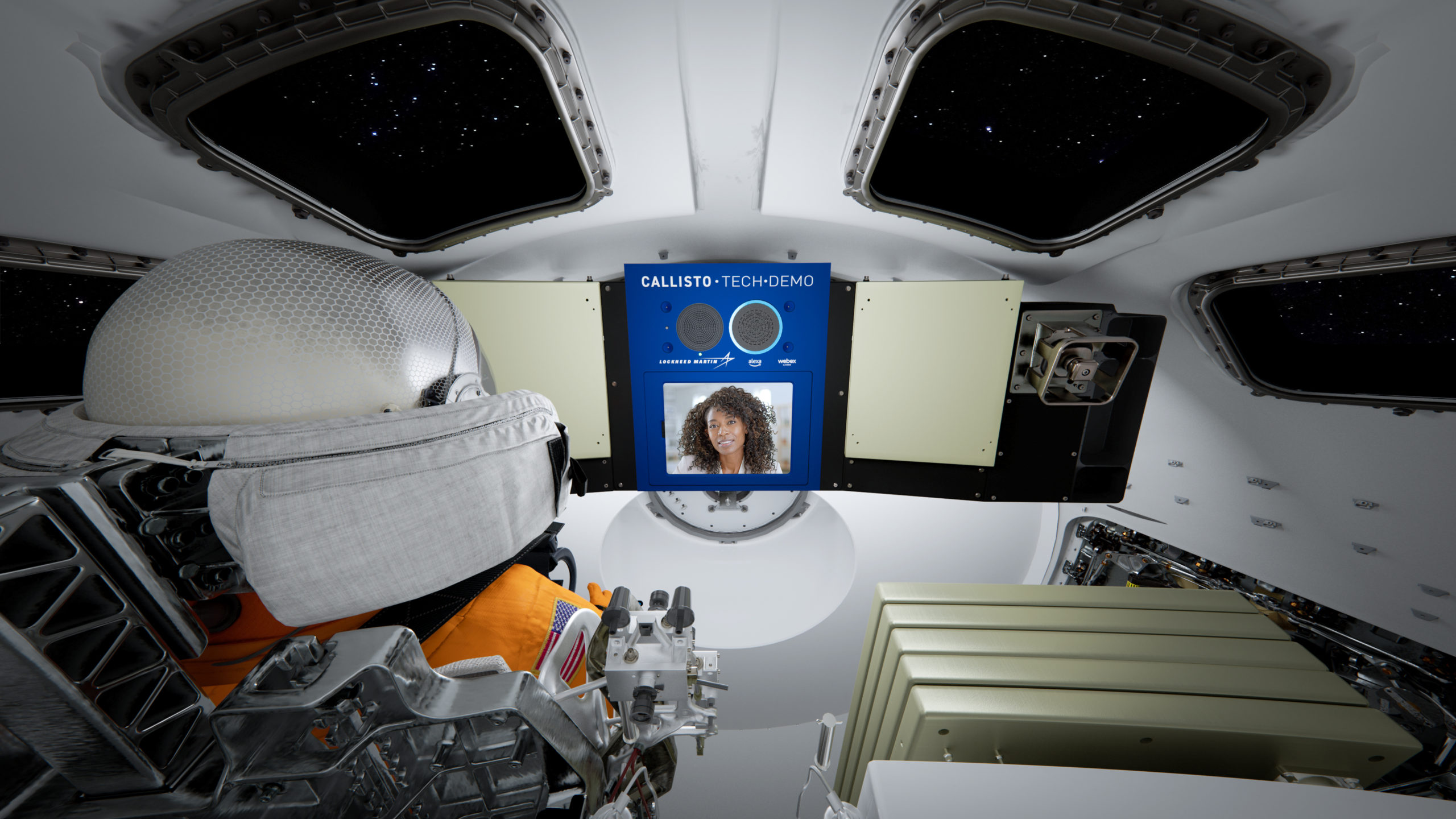
The pandemic has certainly made video collaboration technologies ubiquitous and seemingly simple—but the reality is quite different. For Callisto, hitting “join” triggers a series of actions to navigate the deep space environment and facilitate realistic human interaction.
- Bound by Bandwidth: Bandwidth is a considerable constraint for deep space communication. Imagine traffic on a 10-lane highway suddenly squeezed into a bike lane. Efficiency will be paramount to moving anything along this pipeline. We are attempting to broadcast in HD quality from deep space for the first time. Our engineers are at the forefront of developing technologies to deliver higher resolution video at extremely limited bandwidths. The Webex Callisto solution uses the leading-edge AV1 codec for video compression to ensure transmissions of the highest resolution video possible at 128 kbps, about a tenth of the draw of a typical video conferencing solution.
- Piecing Together Pieces: As video communication travels to the far side of the Moon, data quality can deteriorate, garbling audio and video on the way. The Webex environment affords a proprietary blend of next-generation adaptation and resiliency technologies to provide intelligent error correction that is context-aware to make sense of the noisy transmissions. The result? We expect to demonstrate an overall smoother experience to contend with the interference inherent with deep space communication.
- Buffering to Bridge: The further we travel in deep space, the less our communications occur instantaneously. That is because of the universal speed limit: the speed of light, about 186,000 miles per second. When Orion is near Earth, the time delay—or communications latency—is almost indiscernible. But, as Orion travels further to the Moon, it can take upwards of 20 seconds for information to travel back and forth and up to 40 minutes roundtrip when humans venture to Mars. For Callisto, our engineers have developed custom buffering technologies, taking into account that delays will be part of the deep space video communication experience. Traditional video conferencing systems cannot handle these latencies, and in fact, would start losing data after just milliseconds of delay. Callisto will test how our deep space solution can handle the extreme latencies for the trip to the Moon, ensuring transmissions are intact, preserving the continuity of interactions no matter the delay.
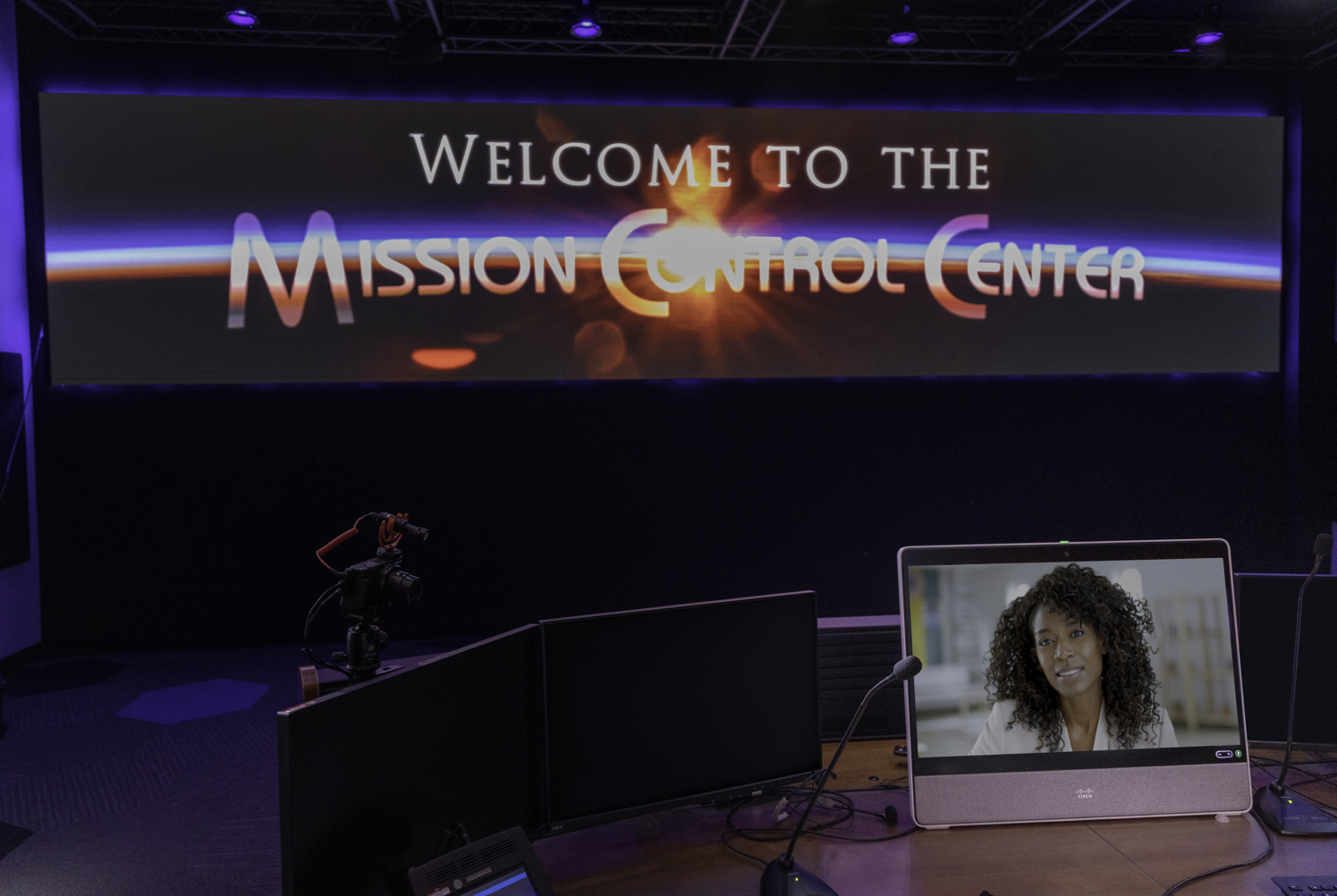
Beyond voice and video, the Callisto Mission Control Center has two Cisco Board Series devices, large digital canvas systems designed for co-creation and collaboration.
- A Picture Worth a Thousand Words: The first Cisco Board is connected to the Callisto payload onboard Orion. In the future, if the crew and mission control need to interface on a problem, both sides could draw on the same whiteboard and work through it together, even if they are hundreds of thousands of miles apart.
- Callisto Virtual Crew Experience: Since Artemis I is an uncrewed mission, we worked with our Lockheed Martin and Amazon partners to build a virtual crew experience. A second device, a Cisco Board Pro, connects outside groups with the Callisto Mission Control Center at NASA’s Johnson Space Center to test ways to bring the public along for this historic journey. The experience highlights how future astronauts can use modern, immersive video collaboration technologies to solve off-world challenges with experts on Earth.
Hollywood makes space communication look effortless. What’s a reality today is that humans are on the precipice of becoming a multi-planetary, space-faring species. As a leader in video collaboration and communications, Webex feels the onus to keep the human network connected no matter where we are. We hope one day the laws of physics and technology give us the ability to fully emulate the stuff of science fiction. To the Moon and beyond!
To learn more about Webex and the Artemis mission, check out this blog from Cisco’s Jono Luk, the executive sponsor for our work with the Callisto technology demonstration.




